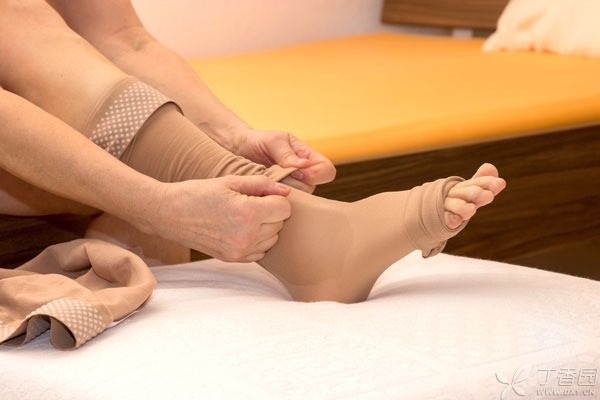
Thrombosis is one of the most common serious complications after surgery. It can cause tissue damage, pain and even death. Many patients do not know this situation, so they may be puzzled by the series of anticoagulants and oral orders prescribed by doctors after surgery.
However, there is no need to worry. For the vast majority of patients, thrombosis can be completely avoided as long as active prevention is carried out.
When venous thrombosis occurs, what signals will the body send out?
Arterial or venous thromboembolism produces different symptoms in different parts of the body. When the scope of embolism is large, the body often has serious symptoms.
What kind of signals will the body send when venous embolism occurs?
-
The skin temperature at the embolization site is higher than usual.
-
Local tissues (mainly limbs) become swollen;
-
Apparent pain.
What harm does venous thrombosis have to the body?
Thrombosis can be called a serious postoperative complication mainly because it will cause pain and tissue damage to the patient’s body.
In fact, we can try to imagine:
Thrombosis is like a [cork] stuck in a blood vessel, which can block the flow of blood in the blood vessel. Once thrombosis occurs, there is a risk that the embolus will fall off.
In many more serious cases, emboli usually fall off and travel to other places through blood vessels. When this happens, emboli are likely to be transported to the lungs by blood flow and cause pulmonary embolism.
Pulmonary embolism often occurs suddenly and must be treated immediately, otherwise it may threaten the patient’s life or cause other serious injuries.
Sitting for too long may cause fatal pulmonary embolism? For more information, please click on the link: Sitting for too long can also cause fatal pulmonary embolism? !
In addition, thrombus may also embolize the ends of limbs, i.e. Cause tissue ischemia of hands and feet, further causing serious damage.
How does thrombus form?
Thrombosis has many factors.
As far as blood vessels and blood systems themselves are concerned, thrombosis may be caused by any reason that can lead to slow blood flow velocity, hypercoagulable state of blood and damage of blood vessel wall.
Thrombosis can occur in both arteries and veins. However, because the venous blood flow goes back to the heart, that is, venous thrombosis can pass through the heart and embolize the blood vessels of important organs along the direction of blood flow, thus endangering life (e.g. Pulmonary embolism, which may cause death).

Why is it easy to form venous thrombosis after surgery?
Compared with arteries, venous blood flow is relatively slow. Most lower limb thrombosis formed after operation is venous thrombosis.
In our daily exercise, especially walking, it will lead to the acceleration of blood flow throughout the body. At the same time, in the process of exercise, the activities of leg muscles play a [massage] role in leg blood vessels, which can prevent blood from staying in blood vessels for a long time, thus effectively avoiding venous thrombosis of lower limbs.
However, during the operation and the recovery period after the operation, the patient’s exercise amount is obviously reduced, so the risk of thrombosis suddenly increases.
During the operation, Most patients are under anesthesia, This state usually lasts for several hours. After the operation, patients often spend more time lying in bed waiting for anesthesia to wake up. This completely stationary state of activity greatly increases the risk of thrombosis after the operation, and factors such as blood deposition in the legs and slow blood flow also increase the possibility of thrombosis.
Patients who are recovering from surgery often have to lie in hospital beds for days or even weeks, which will further increase the risk of thrombosis.
Can postoperative venous thrombosis be prevented?
One way to prevent thrombosis is to use anticoagulants to reduce the risk of thrombosis.
What are the anticoagulants? Will daily diet have what effects on these drugs? Please click on the link: How much influence does diet have on anticoagulants?
Anticoagulants commonly used after surgery include low molecular weight heparin, which can be used for daily subcutaneous administration to prevent thrombosis.
In addition to using drugs, patients can prevent thrombosis in these ways after surgery:
1. Appropriate activities:
During the difficult recovery period after the operation, as long as the doctor allows, get out of bed early and move: if you cannot get out of bed, you can also move your limbs properly under the guidance of the doctor or nurse.
Proper activities can help prevent thrombosis. For example, when walking, the contraction of the leg muscles of the patient accelerates the blood flow speed and can reduce the possibility of thrombosis. Therefore, it is recommended that the patient take two more steps to the ground as soon as possible after surgery. Even a small amount of walking can significantly reduce the risk of thrombosis.
2. Drink plenty of water:
Drinking plenty of water or other drinks can help prevent thrombosis. Drinking plenty of water is the key to preventing dehydration. The best way to judge whether the amount of water drunk is sufficient is to observe the color of urine. When the urine is light yellow or even colorless, the amount of water drunk is sufficient.
When dealing with diseases, prevention is always greater than treatment.
Once venous thrombosis is formed, it is menacing. However, as long as you pay a little attention, you can prevent this disease well. Therefore, after mastering the above new skills, please act quickly to drive away the embolus and make your body better quickly.
Responsible Editor: Jing Liu
